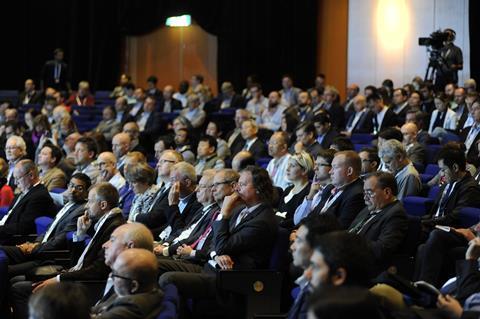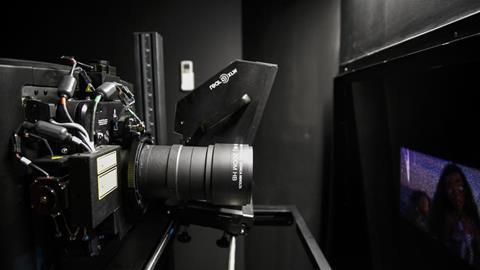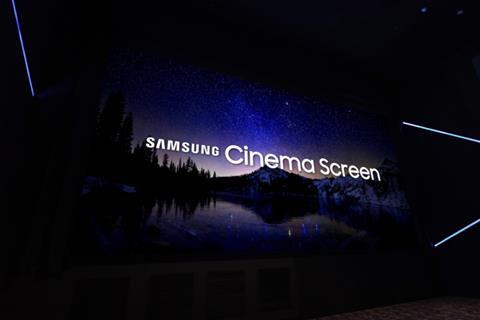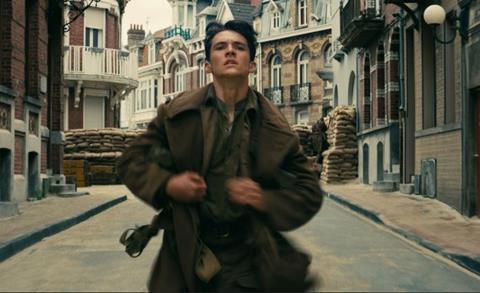Advances in display technology are providing cinema goers with sharper images and even greater dynamic range.
Laser illuminated projection has become that standard for new cinema deployments, as well as for replacements for the first generations of xenon-based projectors coming to the end of their commercial life.

“Laser projectors are still expensive at the higher brightness end, but laser excited phosphor sourced devices are making the technology viable for smaller screens now,” notes Dr David Monk, Chief Executive of the European Digital Cinema Forum (EDCF).
“This represents a major area of growth and change.”
While all-laser multiplexes were a novelty as recently as last year, there are now multiplexes even with all-RGB lasers, such as the AMC Universal Citywalk in Los Angeles, which has Christie RGB 6P lasers in all 19 screens.
NEC was first with blue phosphor lasers (BPL) and has come to dominate the field.

While Barco offers a wide range of BPL and RGB lasers, Christie has focused increasingly on its RGB laser projectors, arguing that falling costs of these means that installation of BPL will peak in 2017.
Meanwhile, IMAX is also ramping up its laser projector deployments, and Dolby Cinema competes for premium high-end experience at cinemas such as AMC and Wanda, with China being the biggest growth market.
Wanda will have 360 IMAX screens by 2020, while Dolby Cinema opened its 100th screen this summer, most of them with AMC.
IBC2017 showcasing the latest in cinema technology, projection and sound at the IBC Big Screen Experience
High dynamic range (HDR) and brighter 3D are the primary driver for RGB laser projection, while lower lamp and maintenance costs are among the key selling points of BPL projectors. HDR is also possible with Sony’s current SXRD projectors, which are used for the Eclair Colour systems deploying in Europe.
Sony will start shipping its SRX-R800 Series 4K laser projectors end of this year in Europe.
Yet the latest cinema technology innovation is one that does away with projection entirely.
“This represents a major area of growth and change” - David Monk
Samsung stunned the cinema industry when it demonstrated its direct view Cinema LED screen at an invitation-only event during the CinemaCon trade show in Las Vegas in March. In early May Samsung’s screen passed DCI compliance certification and on July 13 the first commercial installation was unveiled in Seoul’s Lotte Cinemas World Tower 13 multiplex auditorium dubbed ‘Super S’.
It is arguably the biggest change in cinema since the advent of film projection in the 1890s.
“Today is the day when new innovations in the film industry will begin,” remarked Kim Hyun-suk, head of Samsung Electronics’ video display business, on the occasion of the inauguration of the first installation.
“Cinema LED will vividly reproduce the picture quality and sound that movie screens have not shown in the past.”
It is believed that Samsung will next open a Cinema LED installation in a Los Angeles cinema in partnership with GDC Technology and Harman, which it acquired last year. Samsung has a stated ambition of capturing a 10% global cinema screen market share by 2020, which would equate to 20,000 screens world-wide.
Developed from its consumer television technology, the Cinema LED screens consists of 96 LED panels with edge-to-edge diodes that when assembled produces a 4K (4,096 x 2,160) image on a screen that is 10.3meters (33.8ft) wide in size.
The HDR screen offers peak brightness of 146 footlamberts, almost ten times as bright as conventional cinema projection.
The screen has JBL speakers bordering the screen - instead of behind it - that use JBL’s Sculptured Sound proprietary audio-processing.
Samsung has been engaging with Hollywood studios to ensure a steady stream of film mastered for the higher brightness and wide colour gamut.
Samsung is not the only proponent of this technology, with Sony also having demonstrated its prototype Crystal LED (CLEDIS) screen at CinemaCon and CineEurope.

“The cost of the solution we’re developing now for cinemas will initially limit Crystal LED’s appeal to a small handful of screen owners,” said Oliver Pasch, Sales Director Digital Cinema Europe, Sony Professional Solutions Europe.
“But in time, who knows how quickly the price will come down, and to what level.”
No price has been revealed for Samsung’s Cinema LED, but it is said to offer sustained light output for over 100,000 hours, thus offering a total cost of ownership that is lower than a laser projector over a five-year time span.
IBC2017 conference session Laser: The Creatives’ voice
While Samsung claims that at 10 meters it is larger than half of all the cinema screens worldwide, it is unlikely to be used for large screens initially.
Although not deployed yet, Samsung’s partner GDC Technology is promoting its Jetreel 8K variant “ultra-premium large format cinema experience” that scales the Samsung Cinema LED for larger venues.
The introduction of new cinema technology will be more complex to manage than the initial switch from film to digital.
Michael Karagosian, founder of MKPE and Cinepedia, and Co-Chair of ASC’s Next Generation Cinema Display Committee notes that “the cinema market today looks a lot more like the cinema market of the 1980s and 1990s, than that of the digital transition.”
Then and now, the specification of new technology was driven solely by technology providers, instead of industry groups like DCI.
Managing the critical quality of colour consistency across competitive technologies, for example, requires an institutional process that does not now exist.
Film’s vinyl moment
Driven by several vocal and high profile Hollywood directors, analogue film has staged a relatively small comeback for special releases in 35mm and 70mm.
Proponents include Paul Thomas Anderson (Inherent Vice), Quentin Tarantino (The Hateful Eight) and Christopher Nolan (Interstellar), who shot their film on 65mm and prefer their audiences to see them on the largest screen via film.
The latest Star Wars films were also shot with 35mm and Imax cameras. This trend has led to the re-installation of 70mm projectors in premiere screening venues and the roping in of retired projectionists, whose skills are suddenly back in demand.
“The film comeback is accelerating” - Steven Overman

Nolan’s Dunkirk had the widest analogue release of any recent film when it was shown in 70mm in 125 cinemas across the world this summer, topping the 100 that showed The Hateful Eight in 70mm, thus also making it the largest 70mm release since Far and Away (1992). Dunkirk was shot exclusively with 65mm and special IMAX cameras.
“There’s a very real danger in watering down the theatrical experience with the confusing proliferation of digital technology,” Nolan was quoted as saying in 2015. He also considers it more economical to shot on film than use digital technology.
The next major 70mm release will be Twentieth Century Fox’s Murder on the Orient Express, released later this year.
The film was shot using the last four 65mm Panavision cameras in existence. Director Kenneth Branagh is another film-only filmmaker who lensed Hamlet on 65mm in 1996, when it became the first British film in 25 years to use the format.
“The film comeback is accelerating,” Steven Overman, CMO and President, Consumer and Film Division at Kodak commented, “and the epic, big screen experience is well and truly back.”
While there is a certain hipster appeal of cinemas that show movies on a scratch-prone medium, beyond the cinema it is worth remembering that film remains the only proven long-term archive medium for motion pictures. A lesson not lost on any of the film makers advocating it for both capture and projection of their work.
























No comments yet